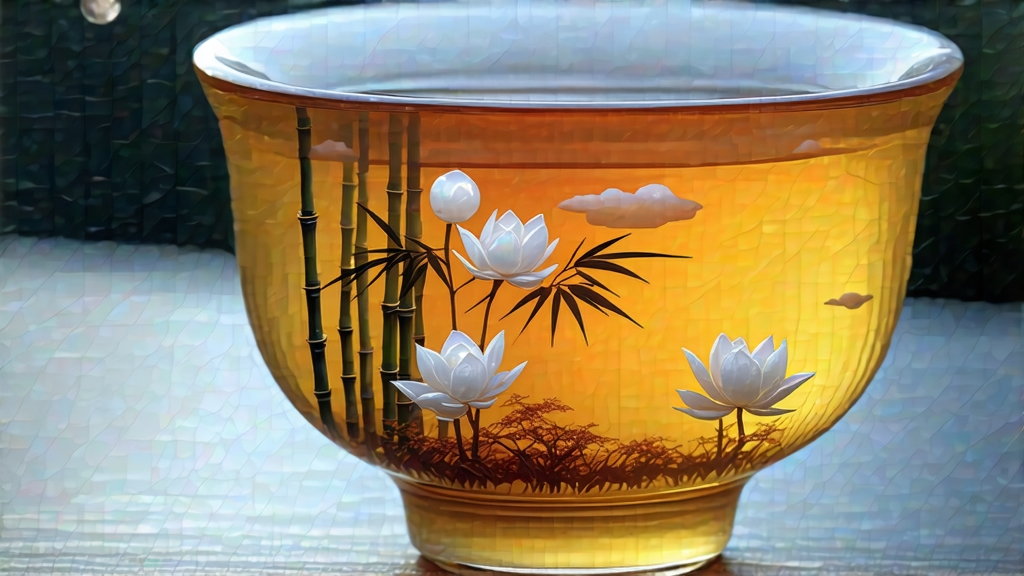
White tea is the quietest child in the Chinese tea family, and among its siblings White Hair Silver Needle (Bai Hao Yin Zhen) is the most ethereal. Legends place its birth during the Song dynasty, when a Fujian prefect presented “silver tribute tea” to the emperor; the earliest verifiable record, however, is an 1857 county gazetteer that describes farmers in northern Fujian selecting only fat spring buds, sun-drying them on rush mats, and wrapping them in soft paper for the scholars who gathered along the Min River. Those scholars praised the liquor for “carrying the taste of first snow on a plum branch,” and the name Yin Zhen—“silver needle”—slipped into local dialect because the bud, when held to the light, looks like a sliver of acupuncture metal.
Geography writes the first chapter of flavor. Authentic Silver Needle is restricted to two micro-zones: Fuding on the rugged coast and Zhenghe in the misty interior, both straddling the 27th parallel. Here red-granite soils drain quickly, and the diurnal swing can exceed 10 °C even in April; the tea bush, a small-leaf cultivar called Fuding Da Bai, responds by storing amino acids in its winter dormancy. When the first true leaf is still a ghost inside the bud—about 25 mm long, 3 mm wide, and covered with a down so dense it looks frosted—pluckers snap it off with a fingernail’s click. One kilogram of finished tea demands roughly thirty-eight thousand such buds, all picked before ten o’clock so the dew acts as a natural antioxidant.
The craft that follows is less manufacture than restraint. Once back at the shed, the buds are spread one layer deep on bamboo trays woven from strips no wider than a chopstick. They rest in shade for two hours, allowing surface moisture to evaporate; this brief wilting softens the cell walls so the bud can later bend without snapping. Then the trays are carried into a courtyard where the sun is still mild; for the next forty minutes the buds are turned every five minutes by hand, the motion resembling a slow wave. Sun-withering is the soul of white tea: enzymes convert lipids into floral lactones while ultraviolet light bleaches chlorophyll to a silvery celadon. If the sky clouds over, masters fire a charcoal brazier to 28 °C and wheel the trays underneath, but they never allow the leaf temperature to exceed 32 °C, believing that higher heat “locks the fragrance outside the bud.” Finally the buds are baked for fifteen minutes at 40 °C, just enough to drop moisture to 5 %. No rolling, no fixing, no shaking—only time, air, and the watchful eye of a craftsman who can read humidity in the ache of an old knee.
The finished needle is a pale cigar of down: matte silver at the tip, dove grey toward the base, with a faint seam where the future leaf once folded. Rub two buds together and you release a scent like fresh melon rind and crushed fennel; break one in half and the interior shows a tiny green heart, proof that oxidation was halted at the border of imagination. Store it in unglazed clay or kraft paper, never plastic, and it will age like a Burgundy, trading melon for honey, then honey for wet slate, then slate for the medicinal coolness of camphor.
To wake the sleeper, use water that has forgotten it was ever boiled. Let the kettle rest until the bubbles have subsided and the temperature hovers around 80 °C; hotter water scalds the down and coaxes an astringent green note. In a tall glass or a translucent gaiwan, drop three grams—about twenty-five buds—then flood until they float like miniature icebergs. The first steep, thirty seconds, yields a liquor the color of morning chardonnay; lift the lid and you meet a duet of cucumber skin and sugared orchid. Sip with the front of the tongue, let it pool behind the lower teeth, and a minerality arrives that reminds some tasters of limestone dissolved in Alpine streams. The second steep, forty-five seconds, deepens to antique gold; texture turns from silk to light cream, and the aroma adds a whisper of fresh pine. By the fifth infusion the buds stand upright on the bottom, a forest of tiny spears, and the cup offers a cool sweetness that lingers in the throat